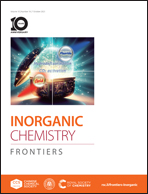Tailoring the accessibility and amphiphilicity of MWW zeolites for two-phase glycerol ketalization†
Abstract
Two MWW zeolite catalysts, purely microporous MCM-22 (3D) and hierarchical ITQ-2 (2D), were synthesized and functionalized with dodecyltriethoxysilane. The functionalized zeolites were employed in a two-phase glycerol ketalization reaction with acetone. There are two crucial factors to consider in this reaction: (i) the kinetic diameter of glycerol is comparable to the size of catalyst pores, limiting its accessibility to the active sites and (ii) glycerol exhibits poor solubility in acetone, causing the reaction to predominantly occur at the interfaces. Therefore, it is essential to focus on enhancing the accessibility of chemicals to the inner catalyst pores and adjusting the hydrophilic–hydrophobic balance of the functionalized catalysts to improve the reaction performance. The accessibility of the catalysts was indirectly evaluated by the chemisorption of pyridine and 2,6-di-tert-butylpyridine, which confirmed that ITQ-2 had a superior capacity to accommodate bulkier chemicals. Moreover, contact angle measurements of glycerol on ITQ-2 zeolites indicated that the functionalized materials exhibited reduced interaction with glycerol due to their increased hydrophobic nature. As a result, the functionalized materials tended to accumulate in the interfacial region, facilitating the dispersion of glycerol droplets within the reaction medium and eliminating the need for an additional solvent to homogenize the system. However, the hydrophobic characteristic played a more significant role at the beginning of the reaction since, after reaching 25% conversion, the system transitioned into a single phase as the product acted as a solvent.



 Please wait while we load your content...
Please wait while we load your content...